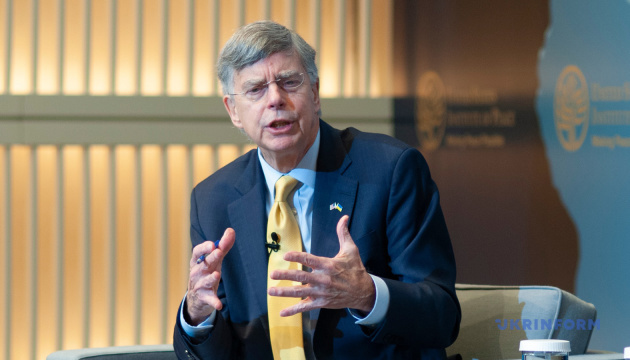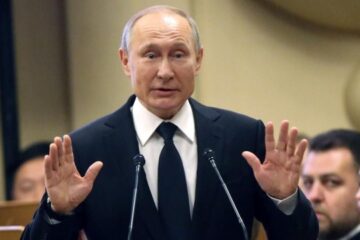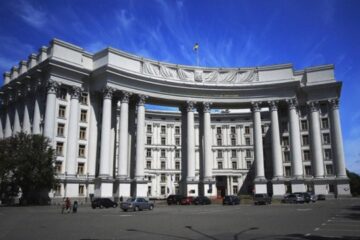A just and lasting peace in Ukraine can only be achieved by exerting sufficient pressure on the Kremlin — pressure strong enough to compel it to end the war. In addition, there must be guarantees that Russia will not invade again. Despite repeated efforts by the White House to perceive a willingness from Russia to pursue peace, President Trump will, sooner or later, come to understand that the core issue lies with Putin himself—and that resolving it will require decisive action.
William Taylor, former U.S. Ambassador to Ukraine (2006-2009) and currently a Distinguished Fellow at the Atlantic Council’s Eurasia Center, expressed this view in an interview with Ukrinform in Washington. The conversation took place on Wednesday on the sidelines of the 13th U.S.-Ukraine Working Group Summit in Washington.
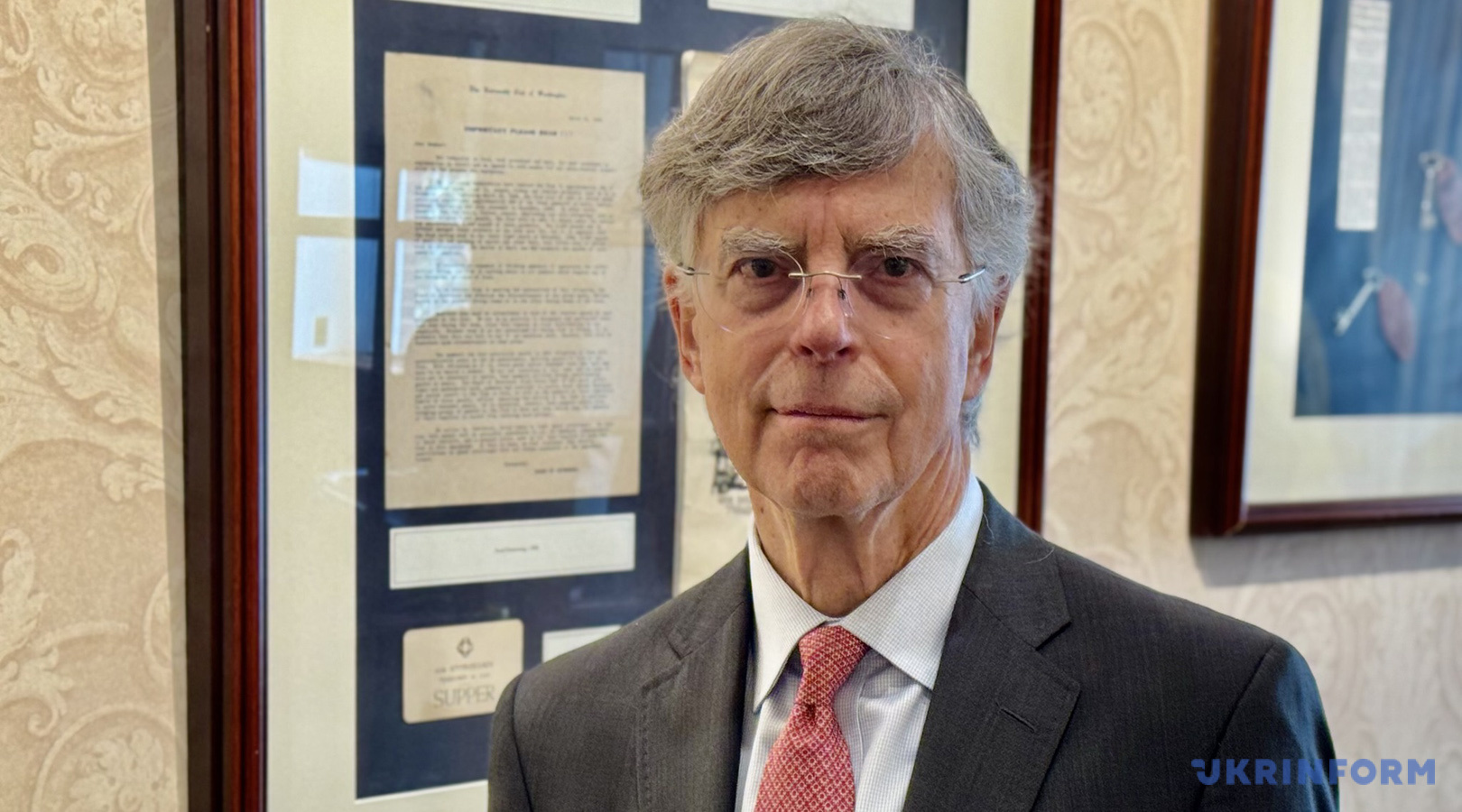
THERE IS EVERY REASON TO IMPOSE SANCTIONS ON RUSSIA
– As we see, President Trump is constantly postponing a decision on pressure on Russia. At the end of May, he repeatedly said he needed to wait for two weeks to understand whether Putin wants to end the war. This time has already passed, and we have not seen any action. In your opinion, does this mean that the current administration is somehow distancing itself from the Ukrainian issue?
– No, I don’t think so. I think President Trump has said that he will take some actions – as you say – he has postponed and delayed that a couple of times. President Putin has given President Trump every reason to impose those sanctions.
President Trump and President Zelenskyy have agreed on an unconditional cease-fire for 30 days in the air, land, and sea. When President Trump presented that to Putin, the Russian President said, “No.” So, Putin is clearly the problem, and I believe that President Trump is going to understand, recognize, and realize that Putin is the problem. And at that point, he will take some steps to put pressure on President Putin to come to the table.
– Do you know who in the current administration plays a factual role in shaping decisions regarding pressure on Russia and support for Ukraine? Who can return the President’s attention to this issue?
– It’s up to President Trump. He is the one making the decisions. There are people around him, as you said, who have advice, have opinions, and have conversations with the U.S. President. But in the end, it’s President Trump. He wants to win, he wants to be a winner. And in order to win, he has to take very strong action to put pressure on Putin to come to the table. That will be winning, and I believe he will get there.
FUNDING FOR AID TO UKRAINE
– Could you comment on the current administration’s approach to providing assistance for Ukraine that was left over from last year?
– So the assistance continues. This is the good news that the military aid, which has been voted on by Congress and has been in the pipeline, continues. That won’t last forever, so there needs to be new funds, and those funds can come from an appropriation, from Congress. Or there’s another even better way to get those funds, and that is to seize the Russian assets that are frozen in European banks. There’s $300 billion. The United States has provided some $60 billion so far in weapons, more in other support, and there’s 300 billion frozen in Western banks, in European banks. That could go a long way to providing the Ukrainians with what they need to buy the weapons from the U.S., American people, American manufacturers.
– By the way, President Zelensky has repeatedly stated that Ukraine needs air defense equipment above all, and now we are even ready to purchase it. How likely is it that President Trump will prefer this option?
– I think President Trump wants to enter into transactions, into deals, into understandings that benefit the United States but also benefit Ukraine. And for the Ukrainians, the Ukrainian government, the Ukrainian military, to buy weapons from US manufacturers – that’s a win for both sides if they use that Russian money. The Russians ought to pay. It shouldn’t be the American taxpayers, European taxpayers, or the Ukrainian taxpayers who pay for it. Again, it should be the Russians who pay for it. So that’s why it makes such sense to seize that money, put it into a fund that Ukrainians can use to buy weapons from the United States.
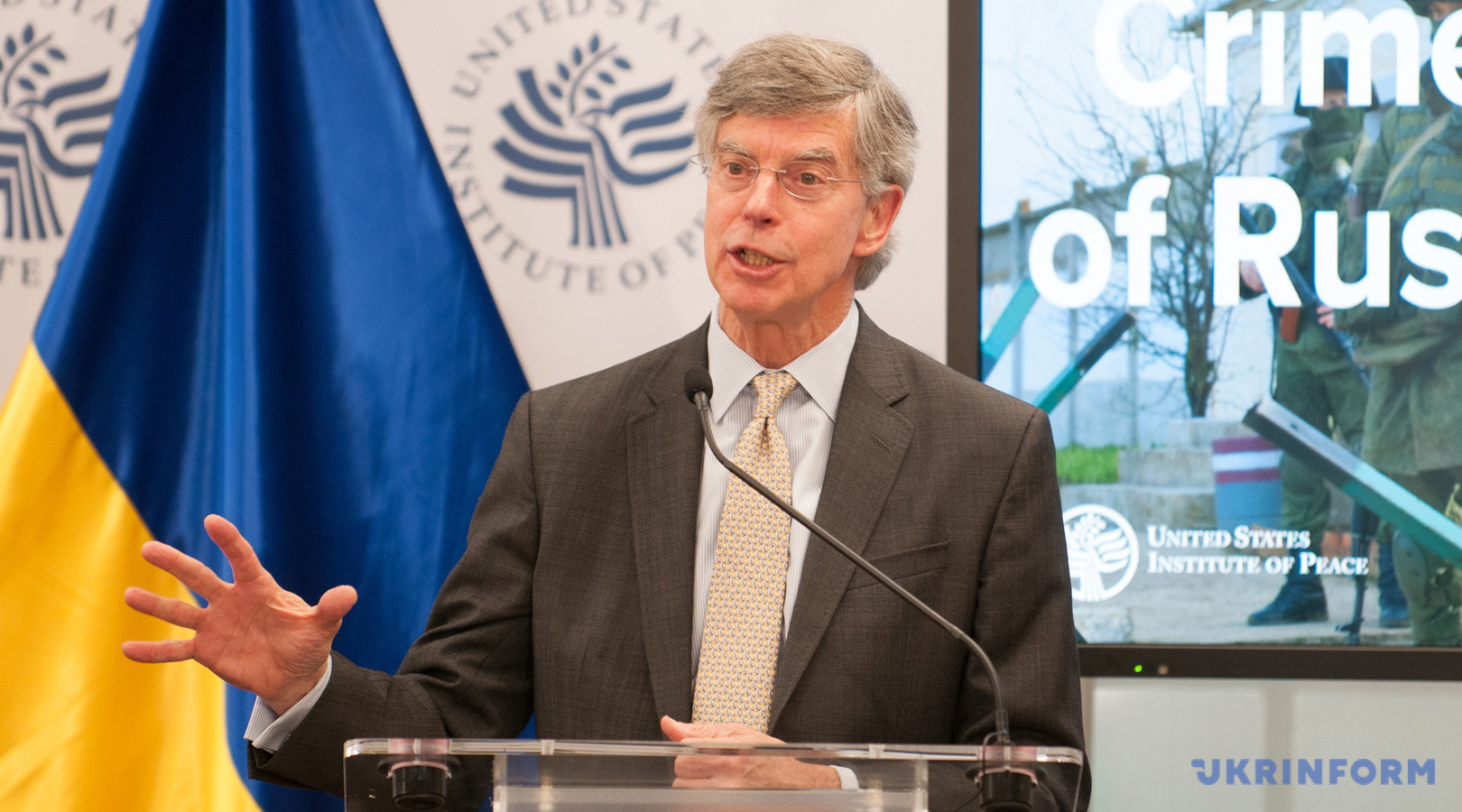
RUSSIA IS A SECURITY THREAT TO EUROPE AND THE UNITED STATES
– Now we see that the situation in the Middle East has come to the forefront of the White House’s attention. Does this mean that Washington can forget about Russia’s war in Ukraine at this time?
– No, no. Russia is clearly the problem. Russia is a threat to security in Europe and, therefore, to the United States’ security as well. So we can’t take our eye off that problem.
– Yesterday, Reuters reported on the plans of Special Envoy Keith Kellogg to meet with the leader of Belarus, Lukashenko. He hopes this can help start peace talks aimed at ending Russia’s war against Ukraine. How reasonable is such an approach in your opinion?
– I think the way to get peace talks going is to put pressure on Putin. I don’t think Lukashenko is a big player. I think Putin is the problem. It’s Putin who needs to be pressured to come to the table.
SENATE BILL SENDS A POWERFUL MESSAGE TO ALL
– How would you assess the development of the situation in Russia in the context of its ability to continue the war in Ukraine?
The Russians have shown that they can continue. They have shown they can take all the resources from the civilian side of their economy and put them into the military side of the economy. The Russian people have shown no indication that they’re going to the streets to protest this war. So it’s the policy of the United States, the policy of Ukraine, and the policy of Europeans should not be based on what might happen in Russia. The policy has to be to support Ukraine in this war.
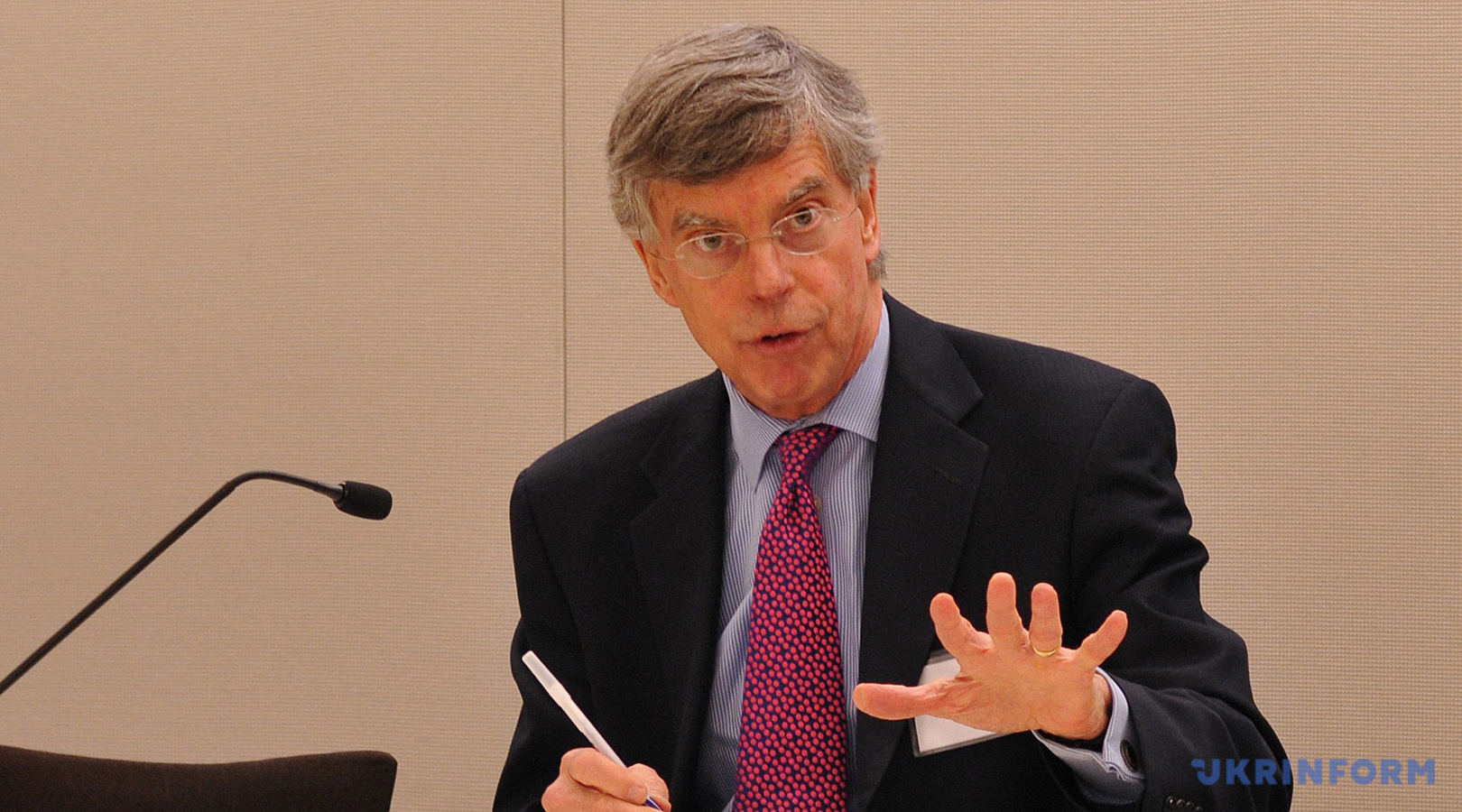
– How could you asses the prospects for the Bill with new sanctions against Russia in Congress? It seems that a critical mass in Congress is ready to approve it, but the President is interested in delaying this initiative.
– So Senator Graham’s bill, with more than 80 co-sponsors in the Senate, is clearly anti-Russia and is clearly pro-Ukraine. It is strong support for Ukraine, strong opposition to what Russia is doing in Ukraine. The sanctions outlined in this bill are severe and harsh. President Trump has not endorsed it, but he hasn’t opposed it. So I think this is the message. It’s a message to the Russians. It’s a message to the Ukrainians that there is strong bipartisan support. It’s a message to President Trump that he’s got political support, political cover, to take these harsh measures, harsh sanctions on any nation that buys oil or gas or other things from Russians. This is a strong message.
– To summarize, what does achieving peace in Ukraine depend on, and what scenarios can exist given the approaches of the current US administration, the change in the geopolitical situation, and the development of the situation in Russia itself?
– Peace in Ukraine depends on putting pressure on Putin. And then it requires a security guarantee for Ukraine. So, putting pressure on Putin to stop the war and enter into a ceasefire that President Trump and President Zelensky have agreed to – that’s the first thing. The second thing is to be sure that Russia doesn’t come back, doesn’t invade again after that ceasefire goes into effect. And there, the Europeans are stepping up to provide a reassurance force.
Yaroslav Dovgopol, Washington
Photos provided by the author

